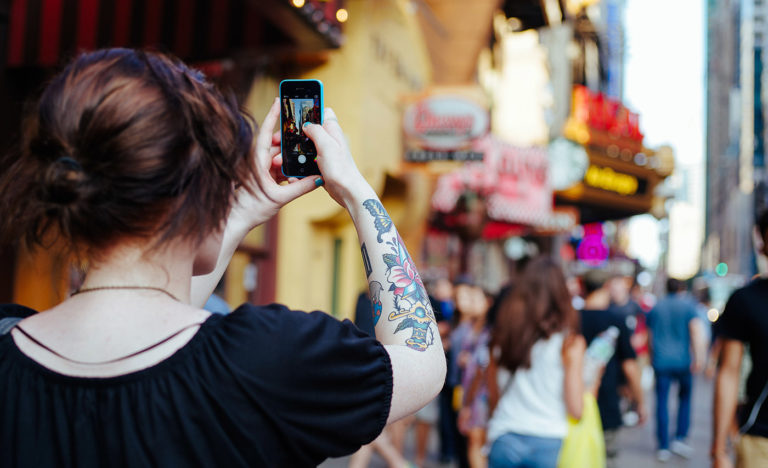Brand’s New World: Enabling Authenticity I

Digital turns us on. We developed technology that helps us have this perception that we are closer to each other – and we are biologically bound to this feeling of being constantly rewarded.
But there is also a “dark side” to this – and that is the dreadful amount of trash that is thrown at us everyday. What is the percentage of content you see everyday that actually matters? Don’t you feel that something’s missing?
The amount of information we process everyday is now so large, that our attention spans are much more narrow. The rate of all this change has been so high and so disparate from our own rhythm that we’re still adapting to it. This has serious and obvious implications for brands. It has been a tantalising job to understand what “digital” really is. What it means to have a brand that is always on, 24/7. But we need to get a grip of it because this process will not stop.
The Network of Perceptions
Two decades ago brands were connecting with consumers through a limited set of touchpoints: there was print advertising in newspapers and magazines, TV spots, product packaging, stores and that major player in identifying a brand – its logo. Branding was mostly a set of tools and techniques to raise awareness of a product by imprinting a perception of it into your brain. And it was quite successful – to the point where some of the logos born in that era became timeless.
But then the digital media appeared and what was once a set of limited brand touchpoints, exploded exponentially to something beyond imagination. We now have websites, e-mail newsletters, Google Adwords, Facebook Posts, Facebook Ads, Facebook Live and Stories, Messenger Bots, Instagram Posts, Instagram Stories, Twitter, Reviews on Facebook and TripAdvisor, blogs… the list goes on and on.
But the main disruption is not about the platforms per se – it is the fact that there are humans, in a worldwide scale, doing what we always loved doing – connecting and communicating.
Every time we, as brands, interact with someone in this new world, we trigger a new touchpoint creating a new perception of us.
The digital revolution is carving a totally new landscape, bridging the gap between brands and consumers and shortening their distances. It eases the process of sharing a perception and creates what we call the “Network of Perceptions”, a world where a brand is created by the consumers themselves.
And this comes as a real challenge to branding efforts. Because agencies now need to act both with a holistic approach and at a very granular and personal level.
There is a metaphor useful to grasp this concept: an orchestra. When you listen to a full orchestra playing a beautiful piece it can make you shiver. A full set of different groups of instruments playing harmoniously is breathtaking. The music conveys emotion to you and the sound immerses you into experiences of joy, sadness and many other more nuanced feelings. But this is only possible through the coordination of a set of different instruments playing together to create this experience.
Brands should act exactly this way. The concept of brand emerges from the multitude of different touchpoints and if it is coherent, synchronised, robust… it becomes engaging.
So, from a digital marketing perspective the tools are getting better every day, the algorithms are working. But still something’s missing. How do we manage this?
It all comes down to advertisers being part of the network – speaking the same language, sharing our values and holding on to them. One of the things we (still) aren’t able to create that many times in the digital world is authenticity.
Enabling Authenticity
It shouldn’t come as a surprise that the term “authenticity” seems to be heard in all advertising contexts. This theme has been around as a buzzword in marketing for a long time and it’s only natural that we’re starting to react to it. And we’d better catch up.
Throughout the twentieth century and the beginning of the twenty-first century this has been mostly accomplished by attributing some sort of cue to the consumer: either through visual cues like badges stating the authenticity of a given product or through mentions to the origins and history of the product. Brands in the consumer goods’ space such as coffee, wines and distilled drinks have mastered this and use it in their communication.
But nowadays this sort of approach is not enough. Because our attention spans are now so much more limited we require more and brands can no longer simply claim to be authentic. We, consumers, require proof.
In 2014, the annual report from Cohn and Wolfe on brand authenticity was already highlighting these issues.
We have, in some way, already started to do this in the last years and we are already making progress but being authentic requires a major shift in how we behave. First of all brands need to understand what are the real drivers to how authenticity is perceived.
The following vectors have been shown to impact on how brands are perceived by consumers.
- heritage/continuity: the perception that arises from the history, connections to particular places or styles and all the related cultural associations
- symbolism: this relates mostly with the brand values that contribute to how consumers view themselves and their identity; and how your brand contributes to that identity construction
- credibility/quality commitment: how strong you hold your standards.
- uniqueness: refers to how different you are perceived to be from your competitors
First of all these vectors must be highly integrated both in the way companies act and how they communicate. And there must be a constant analysis on how this is perceived.
Credits
- Photos by Pedro Palmela
- “Authenticity” lettering by Miguel Spínola
How do you feel about this article?







